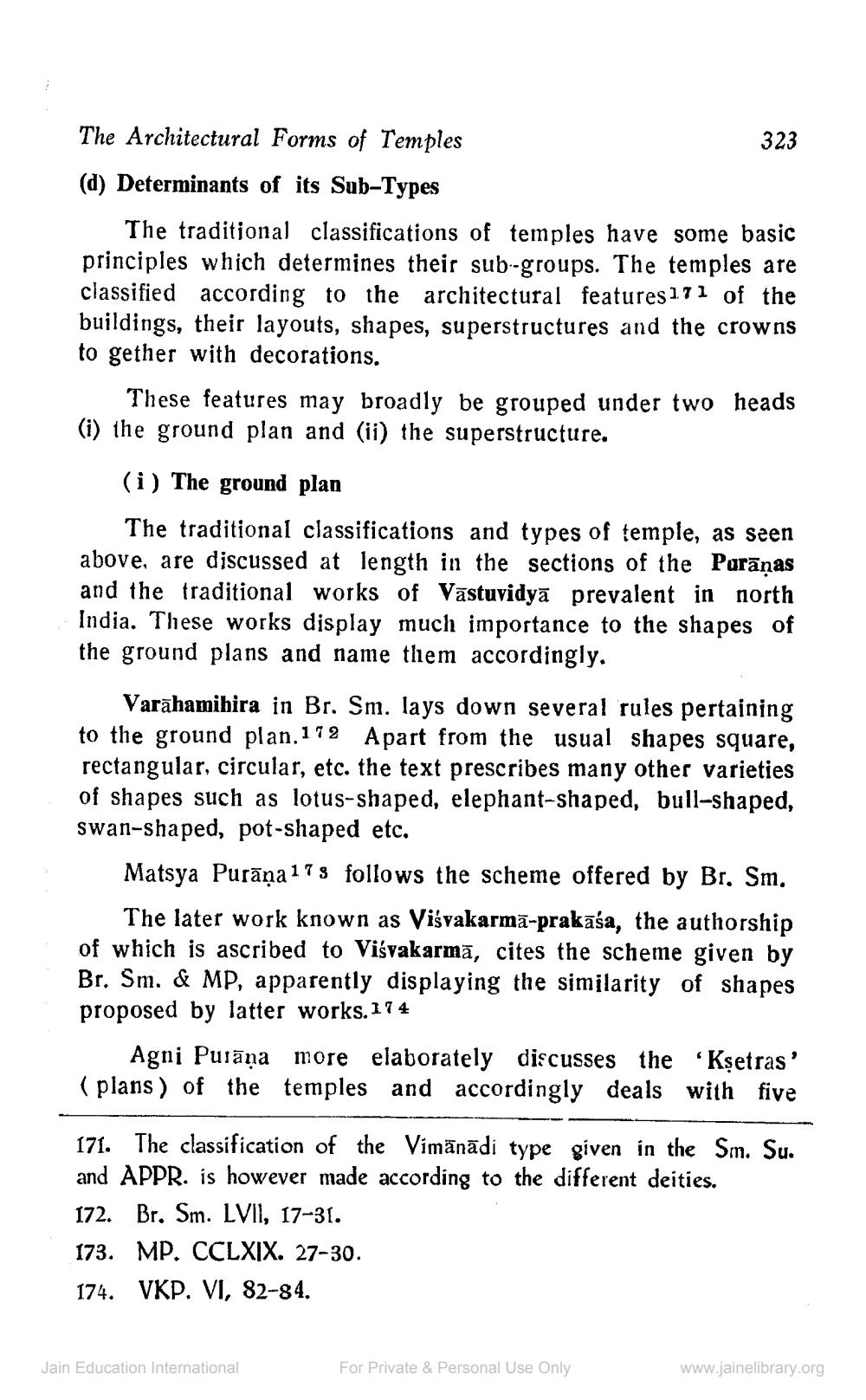________________
323
The Architectural Forms of Temples (d) Determinants of its Sub-Types
The traditional classifications of temples have some basic principles which determines their sub-groups. The temples are classified according to the architectural features171 of the buildings, their layouts, shapes, superstructures and the crowns to gether with decorations.
These features may broadly be grouped under two heads (i) the ground plan and (ii) the superstructure.
(i) The ground plan
The traditional classifications and types of temple, as seen above, are discussed at length in the sections of the Parāṇas and the traditional works of Vāstuvidyā prevalent in north India. These works display much importance to the shapes of the ground plans and name them accordingly.
Varāhamihira in Br. Sm. lays down several rules pertaining to the ground plan.172 Apart from the usual shapes square, rectangular, circular, etc. the text prescribes many other varieties of shapes such as lotus-shaped, elephant-shaped, bull-shaped, swan-shaped, pot-shaped etc.
Matsya Purāņa 17s follows the scheme offered by Br, Sm.
The later work known as Viśvakarmā-prakāśa, the authorship of which is ascribed to Viśvakarmā, cites the scheme given by Br. Sm. & MP, apparently displaying the similarity of shapes proposed by latter works.174
Agni Puiāna more elaborately discusses the Ksetras' (plans) of the temples and accordingly deals with five
171. The classification of the Vimānādi type given in the Sm. Su. and APPR. is however made according to the different deities. 172. Br. Sm. LVII, 17-31. 173. MP. CCLXIX. 27-30. 174. VKP. VI, 82-84.
Jain Education International
For Private & Personal Use Only
www.jainelibrary.org




